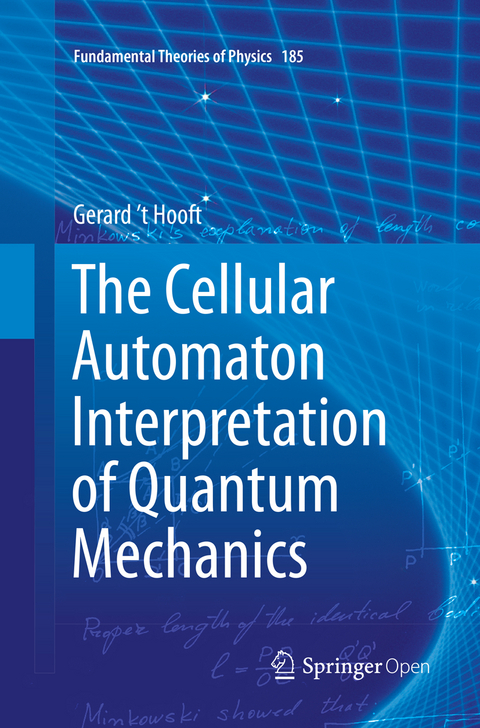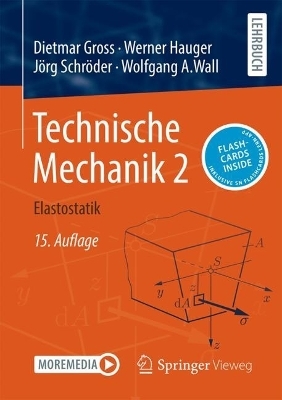
The Cellular Automaton Interpretation of Quantum Mechanics
Springer International Publishing (Verlag)
978-3-319-82314-0 (ISBN)
This book presents the deterministic view of quantum mechanics developed by Nobel Laureate Gerard 't Hooft.
Dissatisfied with the uncomfortable gaps in the way conventional quantum mechanics meshes with the classical world, 't Hooft has revived the old hidden variable ideas, but now in a much more systematic way than usual. In this, quantum mechanics is viewed as a tool rather than a theory.
The author gives examples of models that are classical in essence, but can be analysed by the use of quantum techniques, and argues that even the Standard Model, together with gravitational interactions, might be viewed as a quantum mechanical approach to analysing a system that could be classical at its core. He shows how this approach, even though it is based on hidden variables, can be plausibly reconciled with Bell's theorem, and how the usual objections voiced against the idea of 'superdeterminism' can be overcome, at least in principle.
This framework elegantly explains - and automatically cures - the problems of the wave function collapse and the measurement problem. Even the existence of an "arrow of time" can perhaps be explained in a more elegant way than usual. As well as reviewing the author's earlier work in the field, the book also contains many new observations and calculations. It provides stimulating reading for all physicists working on the foundations of quantum theory.
Gerard 't Hooft is professor of theoretical physics at Utrecht University, The Netherlands. He was awarded the Nobel Prize in 1999, together with his thesis advisor Martinus Veltman, for "elucidating the quantum structure of electroweak interactions". In his subsequent work he has made further major contributions in areas including black-hole physics, quantum gravity, the holographic principle, gauge theory, and the foundations of quantum mechanics.
I The Cellular Automaton Interpretation as a general doctrine: Motivation for this work.- Deterministic models in quantum notation.- Interpreting quantum mechanics.- Deterministic quantum mechanics.- Concise description of the CA Interpretation.- Quantum gravity.- Information loss.- More problems.- Alleys to be further investigated and open questions.- Conclusions.- II Calculation Techniques: Introduction to part II.- More on cogwheels.- The continuum limit of cogwheels, harmonic rotators and oscillators.- Locality.- Fermions.- PQ theory.- Models in two space-time dimensions without interactions.- Symmetries.- The discretised Hamiltonian formalism in PQ theory.- Quantum Field Theory.- The cellular automaton.- The problem of quantum locality.- Conclusions of part II.- Some remarks on gravity in 2+1 dimensions.- A summary of our views on Conformal Gravity.- Abbreviations.
| Erscheint lt. Verlag | 22.4.2018 |
|---|---|
| Reihe/Serie | Fundamental Theories of Physics |
| Zusatzinfo | XVIII, 298 p. 21 illus., 19 illus. in color. |
| Verlagsort | Cham |
| Sprache | englisch |
| Maße | 155 x 235 mm |
| Gewicht | 5378 g |
| Themenwelt | Mathematik / Informatik ► Mathematik ► Angewandte Mathematik |
| Naturwissenschaften ► Physik / Astronomie ► Quantenphysik | |
| Naturwissenschaften ► Physik / Astronomie ► Theoretische Physik | |
| Schlagworte | Cellular automaton theory of quantum physics • Deterministic quantum mechanics • Quantum mechanics as a tool • Reconciling Bell's theorem and determinism • Superdeterminism in physics • 't Hooft interpretation of quantum mechanics |
| ISBN-10 | 3-319-82314-0 / 3319823140 |
| ISBN-13 | 978-3-319-82314-0 / 9783319823140 |
| Zustand | Neuware |
| Informationen gemäß Produktsicherheitsverordnung (GPSR) | |
| Haben Sie eine Frage zum Produkt? |
aus dem Bereich


